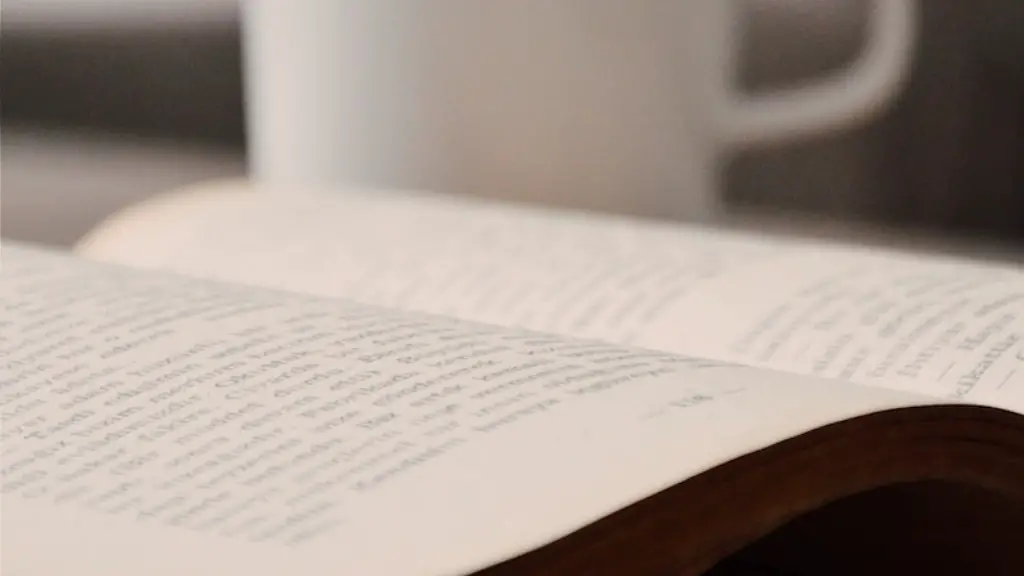Background Information
When considering how to translate a poem from one language to another, it is important to understand the background of the poem. Each language has its own unique characteristics, and each poem’s meaning may be affected by these qualities. It is important to consider the cultural context, style, and tone of the poem, as these can all have a huge impact on how a poem is translated. Additionally, looking at the poem’s structure, such as the meter and rhyme scheme, can provide insight into the poetic meaning and help when translating the poem. While some of these elements may be difficult to translate, it is necessary to capture their essence when translating a poem.
Extracting the Meaning
Poetry is often more complicated than prose, as it can contain complex ideas and metaphors. Despite this, the meaning of the poem is still important and must be extracted when translating. It is useful to draw out key words and phrases that convey the poem’s message. Then, when attempting to translate the poem into another language, these key words and phrases should be used to remain faithful to the original meaning. By understanding the context and metaphor of the poem, it is possible to more accurately capture the poem’s intended message in the target language.
Identifying Timeless Ideas
When translating a poem, it is also important to capture universal themes and symbols that transcend cultures. This is best accomplished by identifying recurring symbols and motifs in the poem and finding interpretations of these ideas within the target language. By honing in on the timeless messages within a poem, the translator can recreate the poem in the target language while still preserving its underlying meaning.
Translating Rhyme and Meter
Capturing the underlying meter and rhyme scheme of the poem is possibly the most difficult challenge when translating poetry. Since rhythm is an integral part of poetry, it is important to attempt to recreate the poem’s sounds in the target language. When carrying out this translation, it is beneficial to go through the poem line by line and identify the words and sounds that will fit into the meter and rhyme scheme in the new language. Additionally, looking for any words or expressions that capture the spirit of the poem in the target language will help to convey the poem’s message.
Conveying Emotion
Emotion and sentiment can be expressed powerfully in poetry. When translating a poem, it is important to make sure that the target language captures the emotional intent of the poet. This can be done by paying attention to the emotion of the words used in the original language, as well as the syntax and contextual clues that create a specific feeling. This may be the most difficult challenge in translating a poem; however, it is essential to convey these feelings as accurately as possible.
Maintaining Form
Maintaining the original form of a poem is also important when translating from one language to another. The form of a poem is closely tied to its meaning and can help to convey ideas that could be lost in translation. It is important to keep the structure of the poem as similar as possible when translating in order to recreate the poem’s full effect.
Translation Considerations
Finally, when translating a poem, it is important to take the time to make the translation faithful to the original poem. This includes understanding the nuances of the poem’s original language, being aware of the cultural context, researching symbols and motifs, and being able to recognize the emotion behind the words. By taking the time to do this, a poem’s true beauty can be accurately translated into the target language.
How To Maintain Consistency
When translating a poem from one language to another, it is important for the translator to maintain consistency in terms of language, culture and style. While the exact form of the poem may not be the same in the target language, it is important to capture the underlying meaning and emotion of the poem. The translator can accomplish this by staying true to the poem’s original ideas and symbols as much as possible. Additionally, it is important to remember to use language that captures the proper emotion within the target culture.
What Are The Benefits Of Translating Poetry?
Translating poetry has many benefits. It can help to deepen the understanding of different cultures, as well as foster communication between people who speak different languages. Additionally, translated poetry can provide insight into the original author’s perspective and allow it to be shared with a wider audience. Finally, by translating a poem, the translator can practice their skills in another language as well as learn more about the culture of the target language.
How Can Technology Help In Poetry Translation?
Technology can play a role in poetry translation in many ways. For instance, AI-based translation services can aid the process by recommending appropriate words and phrases in the target language without sacrificing the original meaning of the poem. Additionally, computer-aided translation tools can offer suggestions of different ways to express the same idea, allowing for the creation of more nuanced translated poems. Finally, online translation databases can provide accessible resources for poets who prefer to go through the process of translation without the aid of technology.
What Are The Challenges Of Translating Poetry?
When attempting to translate a poem, there are several challenges that may arise. For instance, it can be difficult to comprehend the full scope of the poem in the target language, as nuances of the original language may be missed. Additionally, there may be difficulties translating accurately due to cultural context, as well as unique expressions or metaphors that may not have an exact equivalent in the target language. Furthermore, the difficulty of transforming emotion and the rhythm of a poem into the target language can prove to be a challenge.
How To Develop The Ability To Translate Poetry
Although translating poetry can be challenging, developing the ability to do so is possible. An understanding of both languages is critical, as is familiarity with different cultural contexts. Additionally, having an eye for detail is important for spotting metaphors and symbols, as well as for matching the flow and rhythm of the poem when moving between languages. Finally, practice is the key to becoming a better translator, as the more one translates the more comfortable they will become with the process.



